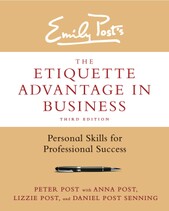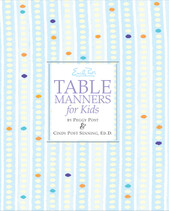
Zoom Etiquette: Tips for Better Video Conferences

The COVID-19 pandemic has significantly changed how we communicate and work. What was already a rising trend in remote working and digital nomadism pre-pandemic now became mainstream once working from home was encouraged when possible. No longer a trend, working from home and video conferencing are now part of the norm.
When working remotely, it’s important to learn how to be a good Zoom host and attendee in order to utilize the platform to its fullest potential. You can be confident in making a good impression when you make an extra effort to communicate well, especially given some of the limits and pitfalls of digital communications. Here are some tips for hosts and attendees to help make Zoom meetings go well.
Zoom Etiquette for Meeting Hosts
- Privacy first. Think about the agenda for the meeting and the topics that will be addressed. If you’re going to discuss sensitive company information and ideas that you don’t want the general public to have access to, you must set proper privacy controls, this may be as simple as setting a password. You should only distribute your zoom link to those you want in the meeting.
- Use video whenever possible. Video should be utilized as part of the meeting unless it makes presenting impossible due to a poor internet connection. A significant portion of communication is nonverbal, and with a clear connection, your message will come across more accurately than if you’re only presenting with your voice. That being said, plenty of meetings have participants who only turn their video on when they speak, or who choose not to use video at all. It’s good to set the expectation at the time of the invitation. It’s also important to know when to move on to audio only if the video quality is straining the meeting.
- Stage the video properly. Make sure your background is business appropriate, and the lighting is helpful in illuminating your face gently (not like putting a flashlight under your chin) and at an angle that doesn’t create shadows on your face. . It’s generally best to have your head and shoulders in the picture, with some breathing room between your head and the top of the screen. Set yourself up so you can look directly into the camera as much as possible. Try to set your camera up so that you are eye level with it and not so that it is positioned high above, looking down, or from below, looking up (or if you do, be sure to blow your nose first.)
- Only invite people who absolutely need to be there. With every new person comes more chances for technical difficulties or distractions. Only invite people who absolutely need to be there. This will result in as little time wasted as possible.
- Introduce people who don’t know each other. It’s good Zoom etiquette to introduce people to each other digitally if they haven’t met before. “Ms. Parker, I’d like to introduce Samuel Winters. Samuel, this is our C.E.O., Regina Parker.”
- Make “eye contact” when necessary. An important aspect of video conferencing etiquette is appearing to make eye contact with other meeting attendees. This can be done by looking right into the webcam.
- Direct your meeting. As the host, let your group know the agenda for the meeting and whether or not interruptions can be accommodated or if questions and comments should be saved for later. You should feel confident directing the pace, and to the degree that it’s appropriate for the conversation. You may even be in control of muting or unmuting attendees depending on the nature of your meeting and the participants involved. While it can sometimes be a lot to manage, and connection speeds can make talking over one another a potential issue, do your best to remain calm and friendly in your tone as you direct the meeting.
- Do not eat or drink. It can be off-putting for people to see or hear you eat or drink. The one exception is water or coffee, especially if you’ve got a packed schedule. However, definitely try to be quieter if you choose to sip (not gulp) a beverage. This is a good time to mute your microphone.
- Take deliberate pauses. People in your meeting will likely have different locations and connection speeds, making quick back-and-forth conversation slightly more challenging. Be sure to take a deliberate, slightly extended pause in between sentences to give other people the opportunity to speak.
- Leave the meeting last. This ensures that anybody who might have questions gets their chance to approach you after the lecture is over. It also ensures that nobody gets cut off.
Zoom Etiquette for Meeting Attendees
- Mute your microphone. It’s always best to mute your microphone when you’re not actively speaking. Unexpected noises from a neighbor, child or pet can cause those speaking to lose their train of thoughts. The same goes for loud typing. Taking notes is great and shows engagement and interest. Just do so quietly, and be sure to look up from time to time so that it doesn’t look like you’ve lost your attention.
- Control background noise to the best of your ability. When your microphone is on and you’re actively speaking or waiting to respond, try to control the background as best as you can. Sometimes traffic outside or noisy neighbors can’t be avoided. Do what you have the power to do to make background noise as little of a distraction as possible. If it’s really bad you might offer to reschedule.
- Position the camera well. Make sure your webcam is positioned at eye-level. It can be a distraction if you’ve got the camera angle coming in from too low or too high. Also, be sure you’re completely in the picture. It indicates that you’re actively listening and engaged.
- Be an active listener. A major part of video conferencing etiquette is making sure you’re listening and understanding what’s being said. It’s not unusual to have a connection lag here and there. It’s not rude to ask for clarification, but it can be rude if you’re really not paying attention.
- No distractions. Home in on your meeting with singular focus. Avoid distracting yourself or other meeting attendees with notifications - unless it’s to signal you’ve lost connection or they are doing something horribly embarrassing and are unaware. Many computers come with a ‘Do Not Disturb’ setting or another way to silence notifications and these can be very helpful
- No multitasking. This is an often overlooked rule. Research indicates that multitasking is counterproductive and can even reduce our IQ. It’s best to be mindful and give your full attention to one task at a time. Ultimately you’ll retain more from the meeting and it will be a more valuable use of everyone’s time.
- Prepare materials in advance. Make sure you have all windows, notes, and tabs where you need them to be ahead of time. This way, you’re spending as little meeting time as possible switching between windows or searching for files. Also be sure all presentation materials are downloaded ahead of time.
- Dress the part! You may be working from home, but it's still worth it to make the effort to dress the part for business meetings. Dressing nicely for work can help you feel professional and confident and it also shows those you’re meeting with that you care about the meeting and yourself..
- Do not eat or drink. It can be off-putting for people to see or hear you eat or drink. The one exception is water or coffee, especially if you’ve got a packed schedule. However, definitely try to be quieter if you choose to sip (not gulp) a beverage. This is a good time to mute your microphone.
If you want more information about how you can optimize your business etiquette skills in this new normal, read our tips for working from home, and check out our business etiquette seminars.









